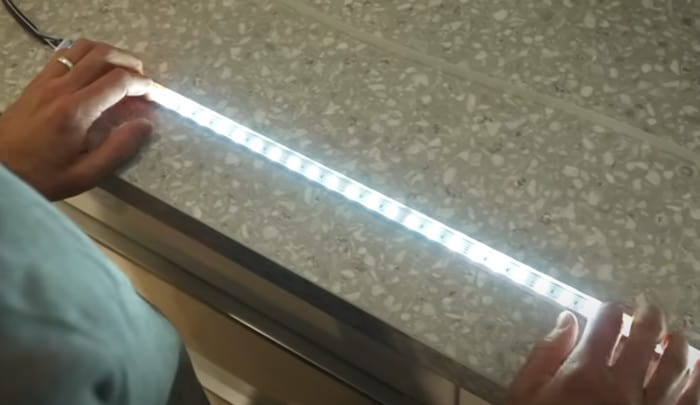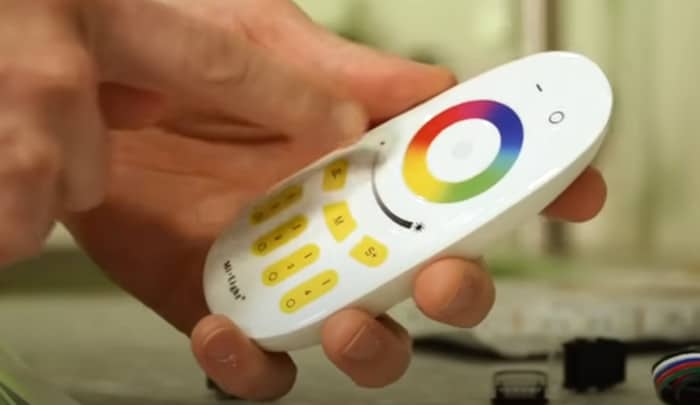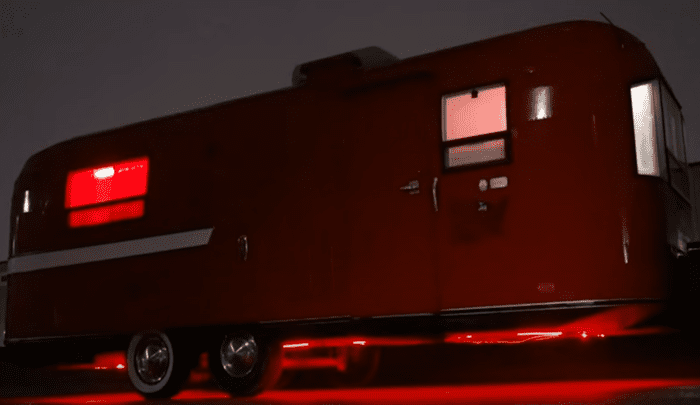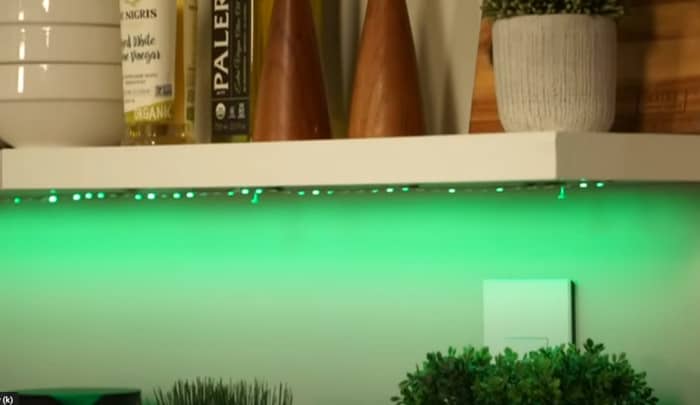If lighting is the key to transform a place from drab to fab, LED strip lights are the proverbial golden key! These versatile lights are often underestimated and underutilized, but their ability to spruce up any space with effortless style is undeniable. If you’re considering investing in LED strip lights for your home or business, this blog post will provide essential information about LEDs and tips for purchasing the best and most energy-efficient strip lights for your space.
Strip LED lights can be installed easily with the right tools and a bit of preparation. Firstly, you will need to measure and prepare the surface properly, and then make sure the power supply is connected correctly before installing the LEDs themselves.
“In the realm of LED strip lights, it’s imperative to look beyond simple aesthetics. The quality and size of the LED chips, the color rendering index, and the adhesive backing all play a critical role in the product’s performance and longevity. A quality light strip will not only save you money in the long run but can also enhance the visual appeal and functionality of your space.”
Gregory Harlington, Electrical Engineer, LED Specialist
LED Strip Lights Overview
LED strip lights are long cables of individual light-emitting diodes (LEDs) encased in a flexible plastic cover. They provide a linear, uninterrupted stream of bright and vibrant light for any home or commercial space. While there are many advantages to this type of lighting source, it is important to understand the basics before taking the leap and investing in LED strip lights.
LED strip lights come in two types: non-waterproof and waterproof. Non-waterproof LED strips are suitable for indoor use and can be used as an accent light in any room of the house or office. Waterproof LED strips, however, can be used both indoors and outdoors in wet areas such as shower stalls, bathrooms, kitchens, and near swimming pools. These versatile lights can enhance both indoor comfort and outdoor ambiance. In addition to being waterproof, these strips are usually constructed with a stronger plastic enclosure to protect the LEDs from vibrations or impacts.

LED strip lights can produce different colors of light by adjusting the color temperature and power output of individual LEDs. These color options range from warm white to daylight white, blue, green, pink and amber depending on the model purchased. Some models also contain individually addressable RGB LEDs that allow users to control each LED separately. This allows users to create unique custom lighting effects with their strip lights.
Another important factor to consider when using LED strip lighting is its power requirements. Most LED strips require a low voltage DC connection like 12V or 24V DC sources such as drivers, transformers, or power adapters, while some may use an AC connection depending on the model. Understanding how much power each LED will consume (measured in watts per foot) and how much current is available from your source (usually measured in amps) will ensure that you buy enough LED strips for your project without overloading them.
LED strip lights offer many benefits over traditional lighting methods that make them a great option for both residential and commercial applications. With careful consideration for usage requirements and budget limits, these versatile lighting solutions can provide years of stress-free illumination that looks great too! The next section will discuss further the advantages of choosing LED Strip Lights over traditional lighting sources.
Advantages of LED Strip Lights
LED strip lights have become increasingly popular in recent years due to the many advantages they offer. The most notable advantage of LED strip lights is their low energy consumption compared to traditional lights. They use a tenth of the power compared to incandescent bulbs and approximately half of the power compared to fluorescent bulbs, meaning you can save money on your energy bills. This also helps make them an environmentally friendly alternative, as using less energy reduces carbon emissions.
LED strip lights also have a much longer life span than both traditional incandescent and fluorescent bulbs, often lasting up to 50,000 hours or more depending on the type of LED light. Since they last so much longer, LED strip lights require less maintenance and can be used for extended periods with fewer issues due to having no filaments or tubes that need replacing.
On the other hand, LED strip lights are generally more expensive than traditional bulbs at the point of purchase. Therefore, the longer-term cost-effective benefits may only become apparent after several years of use. Additionally, LEDs produce directional lighting, which means they do not diffuse light in all directions like traditional bulbs do. This means their coverage area is more limited and multiple strips will likely be needed to properly light up an entire room or large space. It’s also a great deco enhancer, for example, for Art Deco flooring.
Overall, there are undeniable advantages associated with using LED strip lights that have contributed to their growing popularity among both homeowners and businesses alike. With their lower energy consumption, long life span, minimal maintenance requirements and cost savings over time, it is easy to see why so many people today prefer LED strip lights over traditional light fixtures.
Next we will explore further into the world of LED strip lighting by discussing its excellent energy efficiency potential.
Energy Efficiency
LED strip lights have gained increasing popularity among consumers due to their energy efficiency. LEDs are lauded for their 25,000-hour life span and 15 times longer lifespan than traditional incandescent lighting. Though LED strip lights consume much less energy than other forms of lighting, there is still the potential to use moreenergy than necessary when using them. It’s important to understand the energy requirements of the length of strip light you want to purchase, along with its power supplies and controllers.
Controllers are necessary since they are used to control both the brightness (often measured in lumens) and color temperature of LED strip lights. While controlling these parameters can add more versatility to your lighting needs, it also adds an additional layer of complexity that can lead to higher electricity demands. This can become especially apparent if multiple strips are connected together or widths and lengths are not taken into account while selecting any additional components like controllers and power supplies.

On one hand, the ability to customize your lighting with an array of colors, dimming options, scenes, and animations can make LED strip lights quite energy efficient when properly installed and programmed. In these cases, LED strip lights can be surprisingly economical due to the ability to turn off sections when not needed or dim them down in situations where a high lumens output isn’t necessarily required. On the other hand, without proper installation and programming – including adhering to segment lengths for multiple strips that don’t exceed their limits – LED strip lights can take up significantly more energy than necessary.
It’s important to keep all of these considerations in mind before investing in LED strip lights since even a small misstep could end up costing you more in electric bills in the long run. Now that you understand why LED strip lights are considered so energy efficient, let’s move on to discuss how you can control their color and brightness with ease.
Color and Brightness Control
When considering LED strip lights, one of the most important considerations is how much color and brightness control you have. By investing in a dimmable product or a product with full RGB color changing ability, your overall lighting experience can be greatly enhanced.
For those who want full control over the color of their lighting, the RGB LED strips offered by many manufacturers are ideal. Usually powered by an RF wireless remote or app connected to Bluetooth, users are able to choose from a wide range of colors and adjust brightness levels. This level of control is similar to what you might find in high-end lighting solutions, bringing professional-grade illumination to your home. These products also offer more than just white light. For example, some LED strip lights come with preset options including party mode, which rotates through different colors at different speeds.
On the other hand, if you’re looking for more basic lighting without all the bells and whistles, then non-RGB LED strips are ideal. They feature one solid color that cannot be changed but can still be easily adjusted using dimmer switches or an integrated dimming system on compatible models. While these products may not offer as much customization as RGB options, they do provide consistent light coverage with minimal energy consumption.
With both RGB and non-RGB strips available on the market, it’s easy to find the perfect balance between style and function for any space. Whether you’re looking for something subtle or flashy, there’s sure to be an LED strip to meet your needs in terms of color and brightness control.
Now that we’ve discussed all there is to know about color and brightness control with LED strip lights, let’s move on to learn about installation in the next section.
- LED Strip Lights have a lifespan of up to 50,000 hours, which is up to 10 times longer than traditional incandescent or halogen light bulbs.
- LED lights consume 80% less energy than traditional incandescent light bulbs, which can save money on electricity bills.
- LED Strip Lights are highly customizable and can be used in various environments for different lighting effects.
LED Strip Lights Installation
Installing LED strip lights can be a straightforward process, but there are a few important considerations that must be addressed before you start. First, be sure to assess the area you plan on lighting with LEDs, as well as the total space you’re working with. Accurately measuring your space will ensure that you purchase the appropriate length of lights for your area, and allow for proper installation.

Once you have determined the right size and type of LED light strips to use in your area, it’s time to decide if you plan to install them yourself — or engage the services of a professional electrician. DIY enthusiasts may find installing LED light strips a fairly easy task, while those lacking in experience should consider consulting with a certified electrician. Hiring an experienced electrician brings assurance that the job is done safely and correctly. It also may save money in the long-term – ensuring your LEDs are installed correctly helps avoid premature replacement costs or battery drainage issues down the line.
Additionally, there are several types of products available for mounting LED light strips. These range from adhesive-backed products like double-sided tape and self-adhesive clips, to mechanical mountings such as corner brackets and mounting channels laid directly onto walls or ceilings. Depending upon the lighting environment, you may opt for one product over another for best results.
Now that you understand the basics of LED strip lights installation, let’s move on to discussing whether indoor or outdoor LED strip lights are more suitable for different environments in our next section.
Indoor or Outdoor
When deciding on LED Strip Lights, one of the most important considerations is whether you’ll be using them indoors or outdoors. This will have an effect on the type of lights you choose to buy.
For indoor use, LED Strip Lights are a great option since they can be used in areas with limited space and provide brilliant light for low energy consumption. Indoor LED Strip Lights don’t require complicated installation; they ‘stick-and-click’ onto surfaces such as walls, under cabinets, and around corners with ease. Furthermore, indoor LED Strip Lights are available with a variety of colours, shapes and sizes to fit any room or style.
Outdoor LED Strip Lights also offer homeowners a convenient and efficient way to add lighting options to decks, patios and gardens without requiring major construction. They are weather resistant and suitable for a range of temperatures which makes them suitable in most climates. Also, when installing outdoor LED Strip Lights it is recommended to get ones that come with extra protection to deal with weather conditions such as rain or heat. This ensures the lights don’t wear down quickly due to over exposure to the elements.

At the end of the day whether you choose to install indoor or outdoor LED strip lights comes down to personal preferences and your budget. Weighing up the pros and cons before committing is important to getting even more value for money out of these versatile lights solutions.
Now let’s move on to discussing the various uses for LED Strip Lights by exploring how these can be used inside and outside domestic homes.
LED Strip Lights’ Variety of Uses
LED strip lights can be used in a variety of ways, including: accent lighting and architectural applications. Accent lighting can be used to highlight an area, add atmosphere and provide a decorative touch. This type of lighting is ideal for spaces like home theaters or living rooms. It’s also great for businesses, offices and restaurants that want to create a cozy or inviting atmosphere.
Architectural applications are becoming increasingly popular with LED strip lights. They can be used as under-cabinet lighting, edge-lighting for countertops, accenting outdoor banners and signs, and more. These types of applications are made possible due to LEDs being so flexible, moldable and customizable. Furthermore, these applications don’t require a complex electrical setup in order for them to operate.
When it comes to the wide range of uses for LED strip lights, there are both pros and cons associated with each application. In terms of accent lighting, some people may view it as making the space too bright or too dim. While this aspect can be easily tailored to meet individual preferences using different brightness settings, some people may prefer not to even use accent lighting at all.
In regards to architectural applications involving LED strips, those who prefer not to have any forms of light in their home may question if it is necessary or how safe it is. However, LED strips can actually make certain areas safer by providing illumination that would usually be absent—this is especially true when they are used outdoors or in other remote locations where electricity isn’t available but safety is still desired.
Whether you’re looking for an effective way to light up your kitchen countertop or looking to create an inviting atmosphere in your living room, LED strip lights offer an abundance of variety when it comes to finding the perfect solution for your lighting needs. Now that you understand the various uses for LED strip lights, let’s take a look at how you can use them specifically in the kitchen for accent lighting. With that said, the following section will focus on “Kitchen Accent Lighting”.
Kitchen Accent Lighting
When it comes to kitchen lighting, LED strip lights present an interesting and eye-catching option for homeowners seeking to create an accent wall or illuminate statement pieces. They are a cost effective way of achieving a contemporary ambiance in the room and can be used in so many ways.
On one hand, LED strip lights offer an aesthetic that is perfect for modern updates to the kitchen. The bright, crisp light shines from long narrow strips, providing a sleek and contemporary look that diffuses light evenly across large areas. Furthermore, the thin strips reduce clutter due to their low profile design and convenience of installation in tight spots like beneath cabinets or near tall surfaces. Additionally, because there are so many color temperatures available with LEDs, you can completely customize the type of lighting your kitchen receives.
On the other hand, depending on your kitchen layout, installing LED strip lights could potentially require woodworking and other materials like mounting clips or adhesive backing. In some cases, they may require extra insulation and wiring depending on where they’re being placed. Therefore, setup time and costs may be higher than expected if property professionals have to come in to install them correctly.
No matter which approach you take with your kitchen accent lighting project, LED strip lights provide a unique, modern way to add light to any space without taking away from existing decor styles. Overall, they are easily customizable, long lasting options that are sure to leave any kitchen looking stylish and inviting. Now let’s discuss accessorizing our LEDs with options for special effects for truly breathtaking results.
Accessories and Special Effects
When shopping for LED Strip Lights, accessories and special effects can help make the installation look professional and high-end. To get the most out of the lighting system, consider investing in select accessories which enhance the lights and create a unique aesthetic.
Motion sensors can be added to the configuration to enable motion-activated lighting. This is a great way to provide convenience when entering a room without having to manually turn on the lights. They are also ideal for enhanced security by turning off if it detects an intruder or someone who shouldn’t be in the area.

Dimming controllers give users more control over the lighting system. With digital dimming controllers, users can adjust the brightness level of their LED strip lights to create a customised atmosphere. As an added bonus, dimmed lights are more energy-efficient than those that are always at full brightness, further reducing electricity costs.
Remote control systems allow users to easily control their LED strip lights from a distance. Remote systems are particularly helpful for hard-to-reach locations such as industrial areas or outdoor installations as they eliminate the need for climbing ladders to access toggle switches.
Colour changers allow users to cycle between different preprogrammed colours or even program their own colour palettes for decorative effects like fades and strobes. Some models even have integrated music synchronization capabilities that change the colour of the lights based on changes in rhythm and melody providing an extra layer of customization options, you can go for a simple Japandi layout.
These accessories and special effects can drastically improve both indoor and outdoor lighting systems and make them much more useful in everyday life. However, because of their added complexity, these special effects can require additional skill or knowledge both during installation and maintenance so consider this prior to selecting them as part of your system setup.
To finish installation of your LED Strip Lights, now take a look at our next section on “Installation Tips”, which covers how to best position your LEDs for optimal performance and aesthetics.
Installation Tips
Installation of LED strip lights is a relatively simple process, but it’s important to consider a few tips and tricks before beginning. For starters, the type of strip light and its ideal use should be determined. Many are designed for specific purposes, such as providing ambient lighting to living rooms or acting as task lighting in kitchens and work areas.
Ideally, LED strip lights should be installed near a power source; otherwise, an extension cord may be necessary. When mounting the lights—whether it’s on walls or from ceilings—it’s important to pay attention to the adhesive backing of the strips, as this will act as the main source of organization for them. After applying the adhesive backing, tracing the desired course along which the strip will run is essential before peeling the adhesive backing off completely.
Before installation, one should also determine whether they should expose or hide the wiring behind. This is a matter of personal taste: some prefer exposed wiring while others prefer hiding it. Hiding it requires more effort but could provide a cleaner look once completed. If the wiring is exposed, it must be secured properly to prevent accidental contact with other objects.
Finally, considering reliable mounting solutions is critical because most LED strip lights require multiple connections with clips or clips that attach to tracks. Sturdy anchors such as screws and nails help secure these connections and hold up against humid environments and potential wear and tear from children or pets. However, utilizing command strips or other adhesive solutions is an option for renters who need an easier install without altering their walls in any way.
Overall, understanding how to properly install LED strip lights is key for a successful setup that lasts for many years to come. Whether opting for exposed wiring or hidden wiring (or even a combination), careful planning and attention to detail should ensure a hassle-free experience during installation and beyond.
Responses to Common Questions
Are there different types of strip LED lights available?
Yes, there are different types of strip LED lights available. The most popular options are high-density/high-output (HD) LEDs, low-density/low-output (LD) LEDs, and programmable SMD LEDs. HD LEDs offer the highest intensity, but require a more expensive power supply and can be difficult to install. LD LEDs use comparatively less power and are much easier to install since they do not require a dedicated power supply. Programmable SMD LEDs are the most advanced type of strip light, offering variable brightness and multiple color options. All types of strip light allow for creative lighting designs that can be used both indoors and outdoors.
What are the advantages of using strip LED lights?
The advantages of using strip LED lights are plentiful. Firstly, they are highly energy-efficient and can help reduce your energy bills by up to 20-25%. They also produce substantially less heat than traditional lighting, making them safer to the touch. In addition, LEDs last much longer than other types of lighting; with many LED strips boasting a lifespan of 50,000+ hours. This means less frequent replacement and long-term savings on your light maintenance costs. Furthermore, LED lighting projects come in a variety of different colors, allowing you to customize your environment and set the mood accordingly. Strip LEDs also have a much smaller form factor than other types of lights; making them perfect for task lighting or applications where size and space is limited. Lastly, they are extremely versatile – able to easily bend, stick, or hang nearby any surface – giving you ultimate control over the layout and design of your lighting solutions.
How should strip LED lights be installed?
Strip LED lights should be installed using an adapter that is compatible with your application and specific strip light. If mounting the strip, most have channels on the back of the strip that can accommodate a variety of mounting optionsincluding, but not limited to, double sided tape, screws or zip ties.
It is important to ensure the power source is dedicated and capable of supplying enough wattage for your LED strip application. Once you have connected the power source, if necessary, you can connect any desired controller(s) depending on the type and model of LED strips being installed. When routing wires, try to keep them away from any heat sources or other wires as much as possible to reduce interference.
Finally, you should test out your setup before fully assembling it to make sure everything works as expected.
References
https://www.nytimes.com/wirecutter/reviews/best-smart-strip-lights/





During my time working in the lighting industry, I found that LED strip lights were a game changer for achieving atmosphere in both work and home environments, particularly in rooms with minimal natural light.
I’ve used LED strip lights in several areas in my co-working space from outlining the bar area to the workstations. It really makes a difference, especially in creating a conducive atmosphere for the different vibes needed in the workspace. Not only do they add to aesthetics but it’s a cost-effective and energy-efficient lighting solution which is a win-win in my book.
In my role as an interior designer, I have executed various projects using LED strip lights for both aesthetic appeal and energy efficiency.With the right color temperature & positioning, these lights can dramatically alter the mood of a space.
I would urge caution to anyone getting swept away by the aesthetic appeal of LED strip lights, consider not only installation but also maintenance, as sometimes these lights could be more difficult to replace when they fail, compared to standard bulbs.
From my personal experience, the maintenance of LED strip lights takes a bit of effort but let me tell you something – it’s totally worth it! The energy saved coupled with the elegance they add to the spaces is unmatched.
LED strip lights can indeed be compared to that golden key you’ve mentioned, Valencia. They are like Swiss army knives of the light world – versatile and packed with useful advantages!
It’s also worth noting that LED strip lights offer immense savings over traditional incandescent or even compact fluorescent bulbs in the long run. Given their energy efficiency and longevity, despite a slightly higher upfront cost, they can prove to be economical over time. Also, versatility is indeed an understatement when it comes to these ‘golden keys’—they are not just for aesthetics; I’ve seen them used creatively in functional applications like under-cabinet lighting, outdoor path lighting, and even as grow lights for indoor plants!